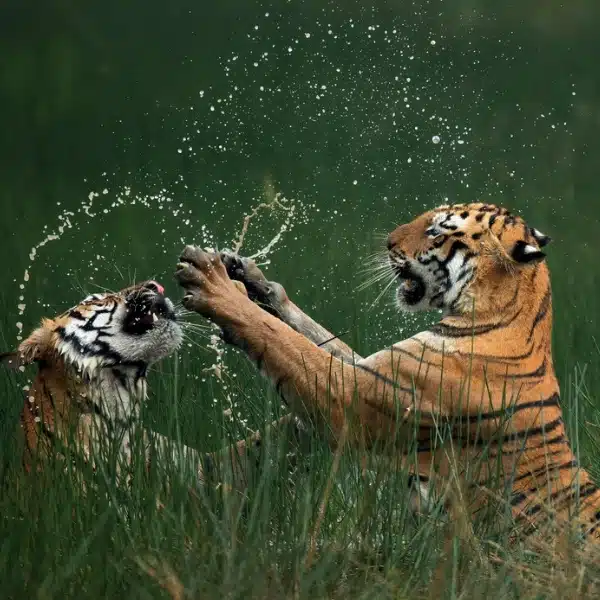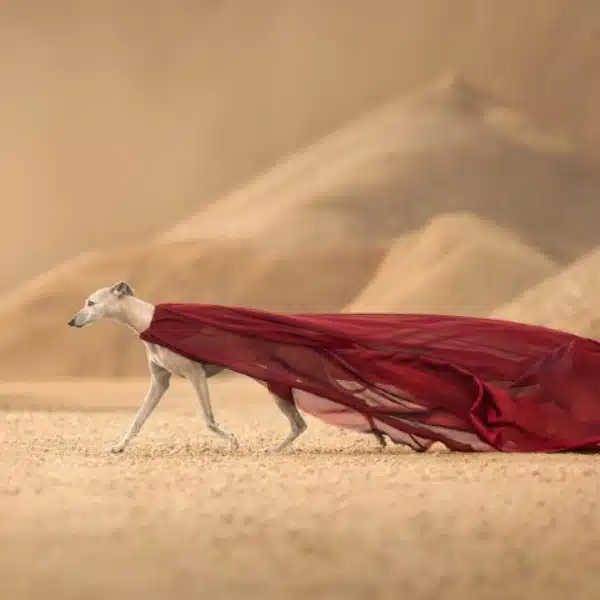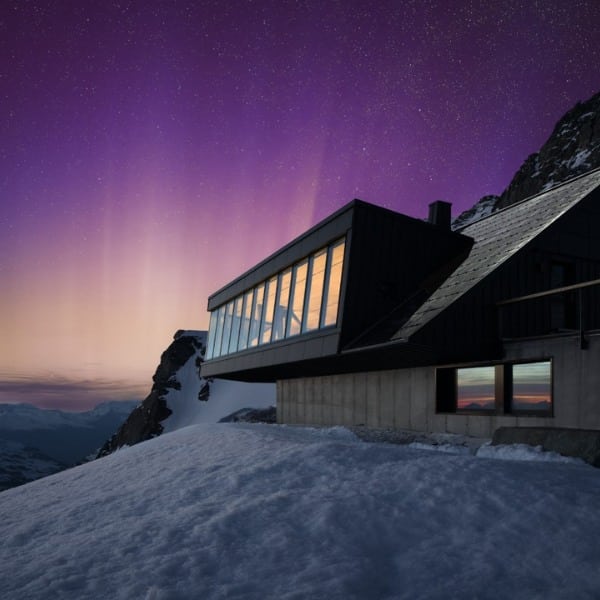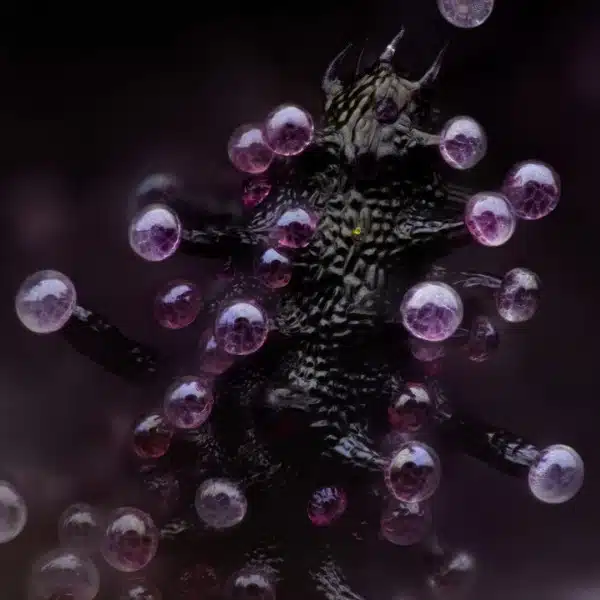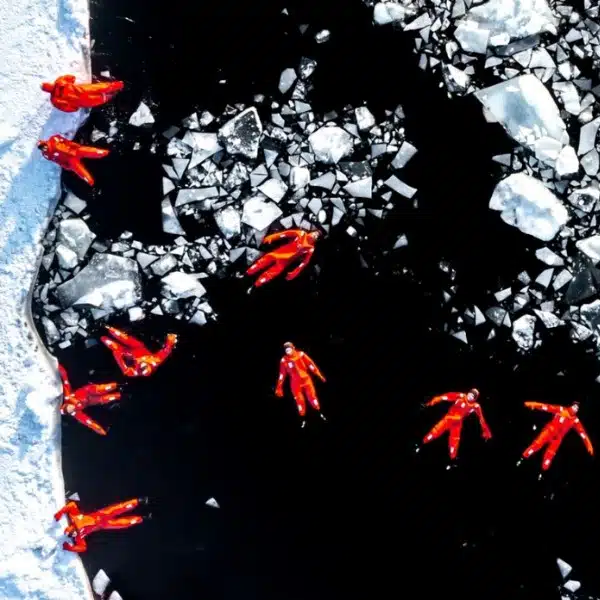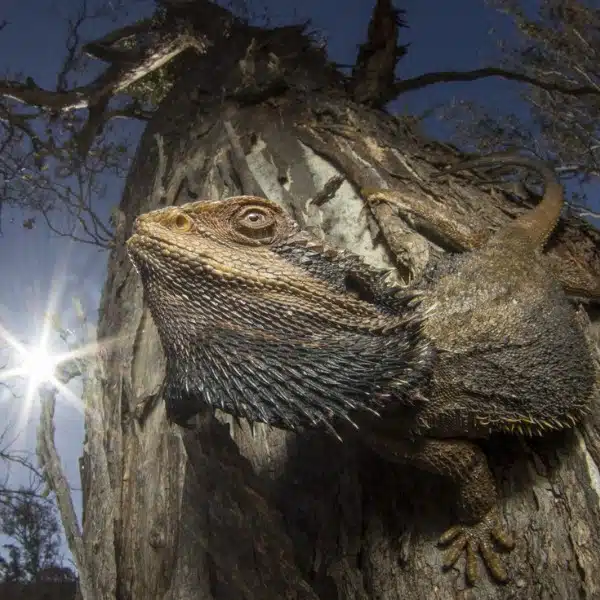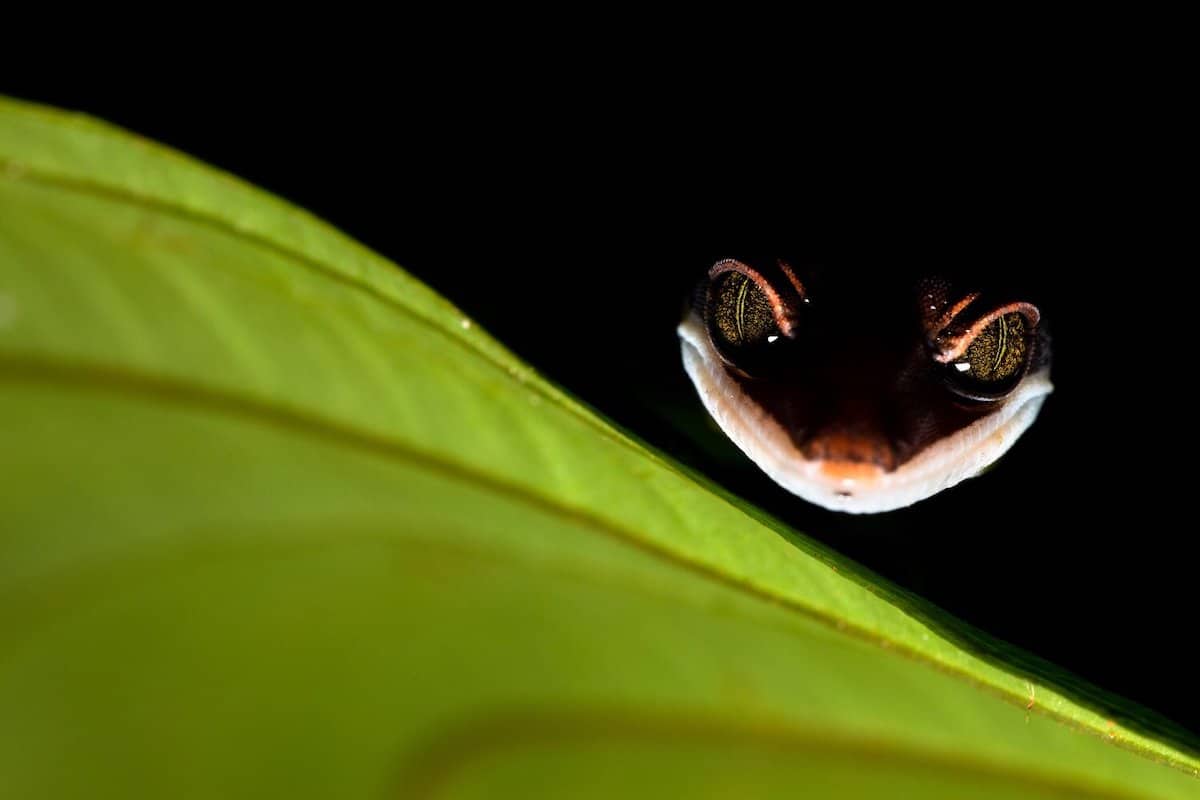
“Cheshire Gecko” by Bernhard Schubert (Austria). Finalist, Animals.
“The impudent expression of this cat gecko (Aeluroscalabotes felinus) reminded me of the Cheshire Cat from Alice in Wonderland. In fact, this creature gets its name from the way it curls up its tail to cover itself while asleep, similar to a cat. I found this individual during a night walk through the Kubah National Park on the island of Borneo (Malaysia). I carefully placed an external flash under the leaf and the gecko so that some parts of its head were illuminated. Adjusting the flash even slightly resulted in a completely different picture.”
For the second year, the Close-up Photographer of the Year competition has spotlighted the small world that often passes under our noses, unobserved. Through micro, macro, and close-up photography, these photographers settle into the details and expose new aspects of our planet.
This year's contest has had more entries than ever, with over 6,500 images submitted from photographers in 52 different countries. The competition was split into six categories for adults, including Animals, Insects, and the Manmade World, as well as a special Youth category. In the end, it was French photographer Galice Hoarau who not only won the animal category but was named Close-up Photographer of the Year. His photo of an eel larva taken during a blackwater dive in Indonesia captured the judge's hearts. For his efforts, he won a £2,500 ($3,250) prize.
Close-up Photographer of the Year has released a spectacular gallery with the top 100 photos, which includes all the category winners and finalists. With so many standout images, it's difficult to cull the list. Some of our favorites include a mysterious portrait of a cat gecko in Borneo by Austrian photographer Bernhard Schubert. Its face is framed perfectly by a bright green leaf, which only sets off its wide eyes even more.
Equally fascinating is Hungarian photographer Csaba Daroczi's look at a sand dune. He managed to transform this local environment into a sculptural masterpiece by capturing the cascading sand using a slow shutter speed. All told, all 100 photographs weave unique stories of the world and show the myriad subject matters that can be photographed in exceptional ways up close. Scroll down to see more of our favorites from Close-up Photographer of the Year.
The winners and finalists of the Close-up Photographer of the Year competition show their unique perspective on the world in detail.
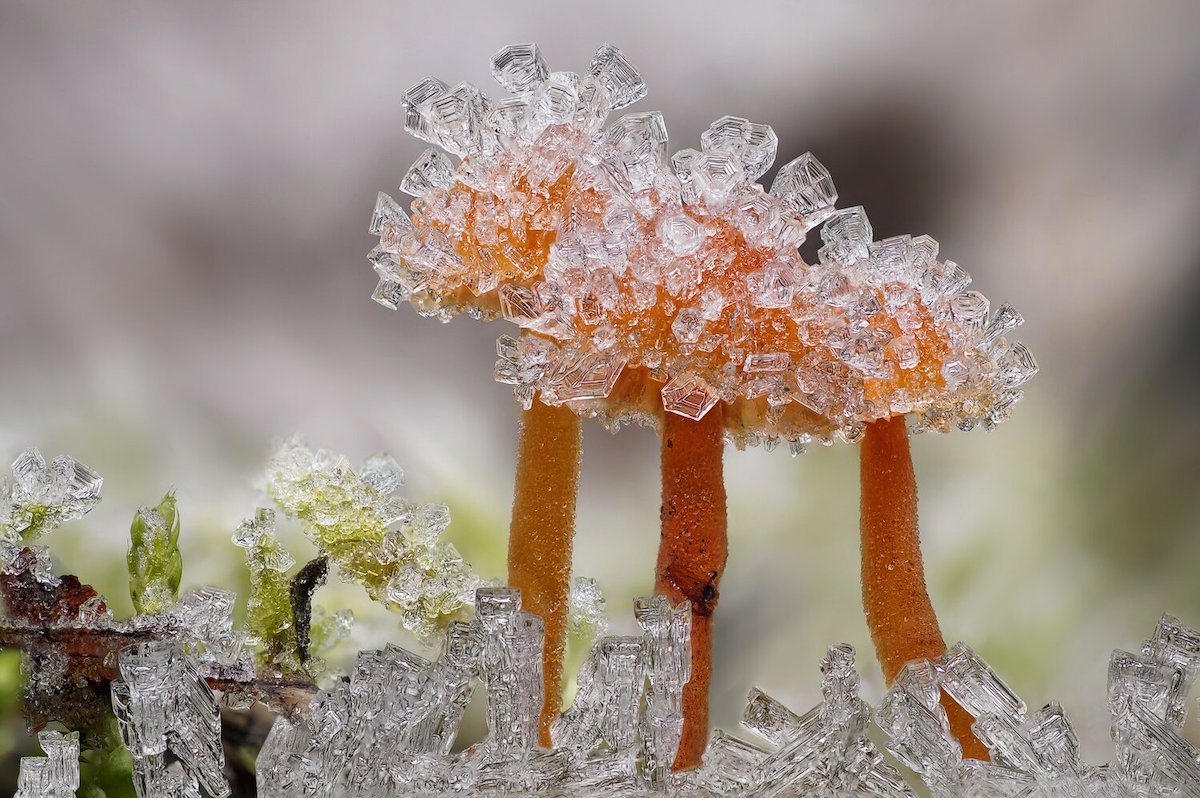
“Little Winter Wonderland” by Alexander Mett (Germany). Finalist, Plants & Fungi.
“This picture of a small group of mushrooms with icy caps was taken on a very cold winter's day, just one day before the end of the year on a 2.5 hour macro tour. I found the mushrooms in a wooded area near my home at Herbstein, Germany.
For this picture I lay flat on the ice cold and hard floor to take the series of pictures as calmly as possible. For this focus stack I made over 130 handheld pictures.”

“Eel Larva” by Galice Hoarau (France). Winner, Close Up Photographer of the Year.
“I spotted this eel larva off the island of Lembeh (Indonesia) during a blackwater dive. Blackwater diving is essentially diving at night in the open ocean, usually over deep or very deep water. Divers are surrounded by darkness, with only a lit downline as a visual reference. Peering through the darkness with your torch can be quite stressful the first time you do it, but it gets fascinating very quickly.
What makes blackwater diving so magical is the abundance of rarely seen planktonic creatures you spot as they take part in one of the largest daily migrations of any animal on Earth. After sunset, small pelagic animals (like this larva) rise close to the surface to feed where the sunlight has allowed planktonic algae to grow. At sunrise, they dive into the depths and stay down there during the day to escape predators.”
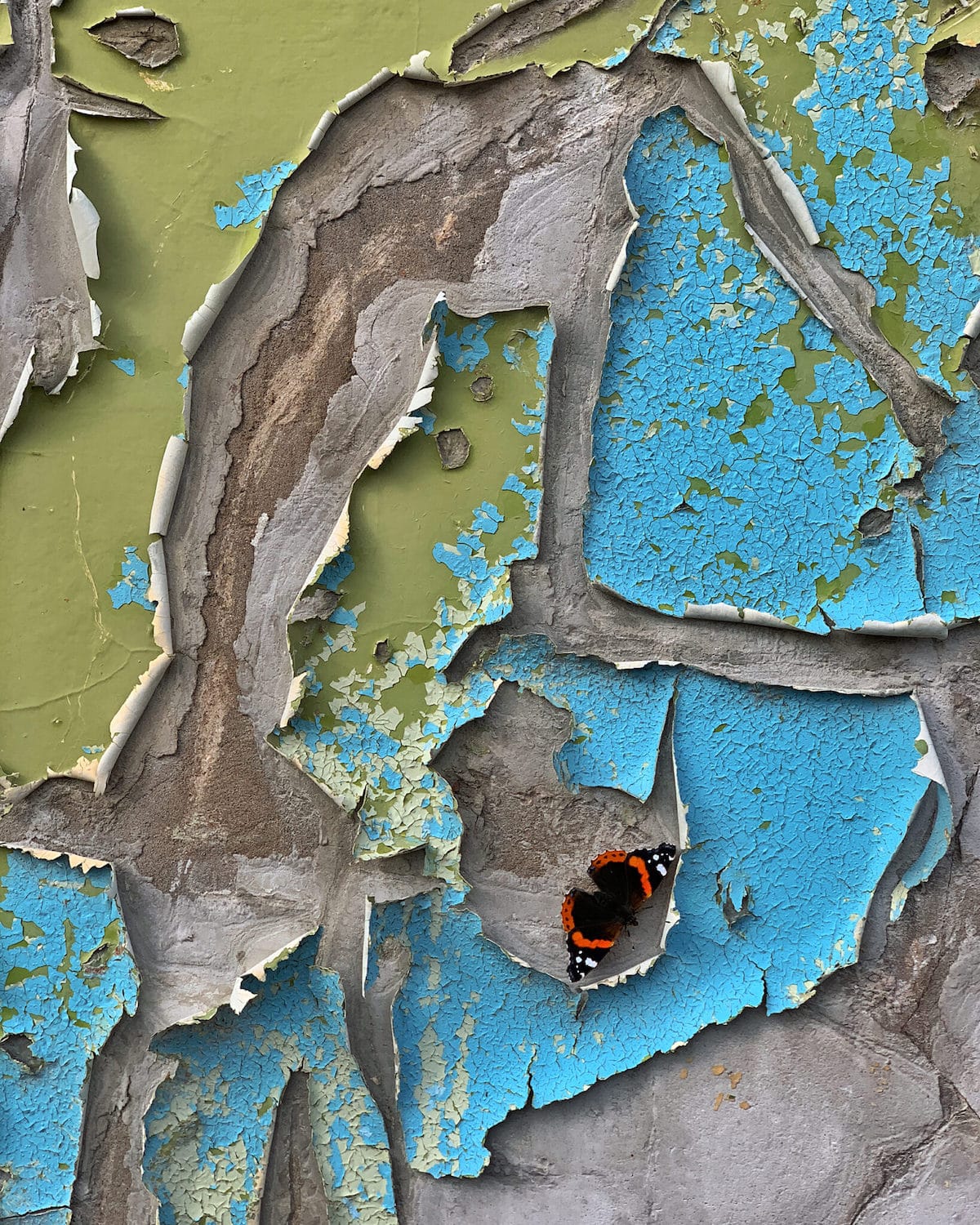
“Fragile” by Mike Curry (UK). Winner, Insects.
“I was visiting Goole, the town where I was born, in November 2018 as my Dad was very ill in hospital. To take my mind off things I went for a walk with my wife Justine. There had been no time to pack really so all I had with me was my iPhone XS. We were walking towards the docks when I saw some beautiful peeling paint on an abandoned building site. I went over to photograph it when Justine asked if I had noticed the butterfly too. I hadn’t as I was miles away, but had already captured this image serendipitously.
It felt a surreal moment as my dad particularly liked butterflies and always commented that they represented relatives who had passed away, making it even more poignant. Unfortunately, he passed away shortly after, so this is a special photograph for me.”
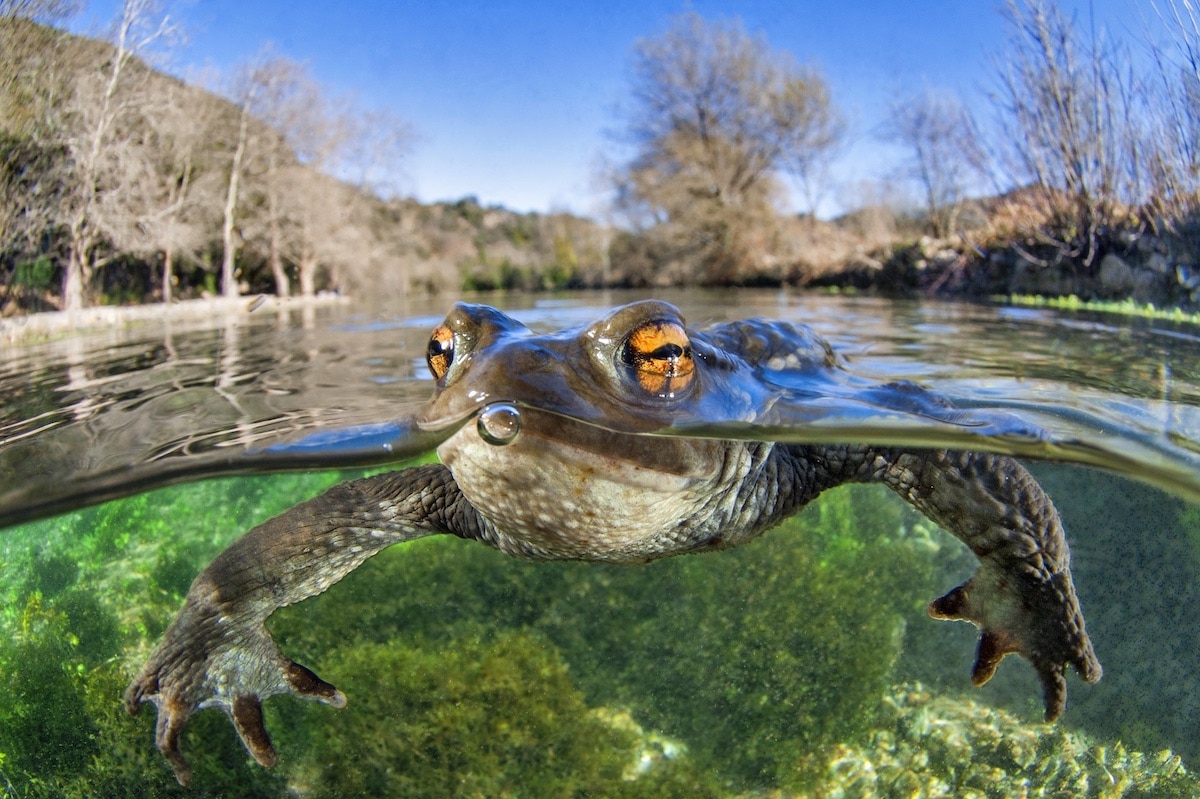
“Bufo Bufo” by Mathieu Foulquié (France). Third Place, Animals.
“This common toad (Bufo bufo) took a liking to me, probably because I looked like a frogman myself. He didn’t stop following me during my two-hour dive in the Buèges karst spring (Hérault, Occitanie, France), so he became the perfect model.”

“Sand Falls” by Csaba Daroczi (Hungary). Finalist, Intimate Landscape.
“I often go to a sand mine near my town, as there are always good photo opportunities there. In spring 2020, I was drawn to some strange shapes in the sand. As I started to take photos, sand from above began to cascade onto the shapes below. I thought it would make a good picture, so I quickly placed my camera on the tripod and selected a slow shutter speed to capture the movement.”
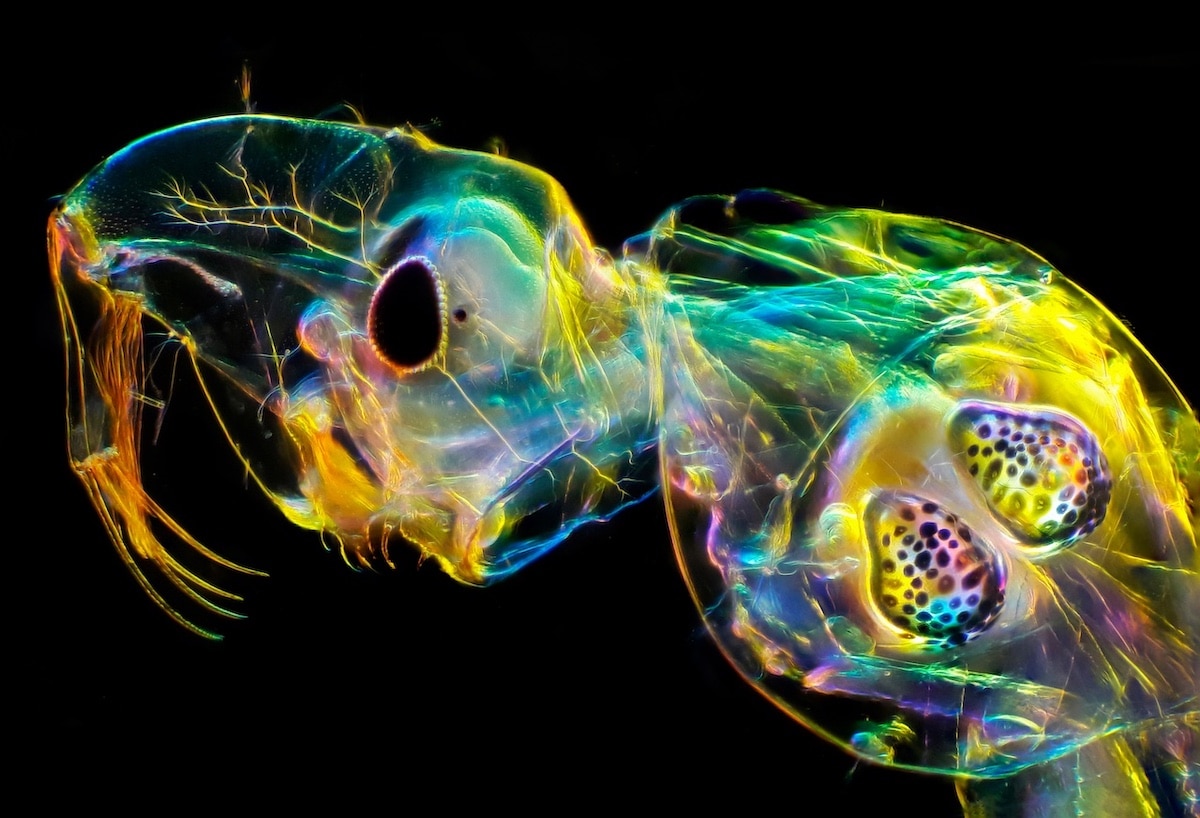
“Glassworm” by Andrei Savitsky (Ukraine). Winner, Micro.
“Glass worms can vary in length from about half an inch to two inches. On the right side of this particular image you can see the large tracheal bubbles that serve as hydrostatic organs (or swim bladders). These bubbles allow the larvae to keep its horizontal position in the water column, while also helping to regulate the depth of its immersion. The bubbles are covered with dark pigment cells that can resize – if the cells expand due to absorption of light, the tracheal bubbles heat up and increase in volume, reducing the weight of the larvae and causing it to float up.
To create the picture here I made a panorama of eight frames, each of which was focus stacked. To make the image as detailed (and aesthetically pleasing) as possible I used darkfield and polarization techniques.”
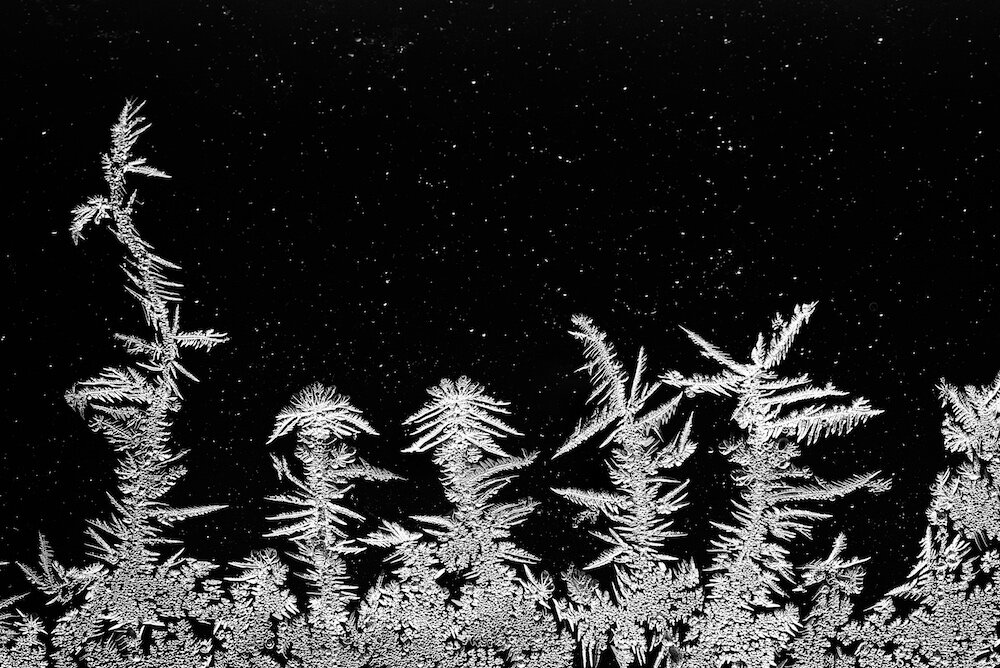
“Ice Landscape” by Edwin Giesbers (Netherlands). Third Place, Intimate Landscape.
“My house was fitted with thermopane glass in the summer. When winter set in, moisture became trapped inside the window due to a defect in the glass. One night it froze, creating beautiful ice crystals. The morning sun lit the crystals and a dark building in the background made the shapes stand out even more. The image reminded me of a Scandinavian landscape with pine trees and a sky full of stars.”
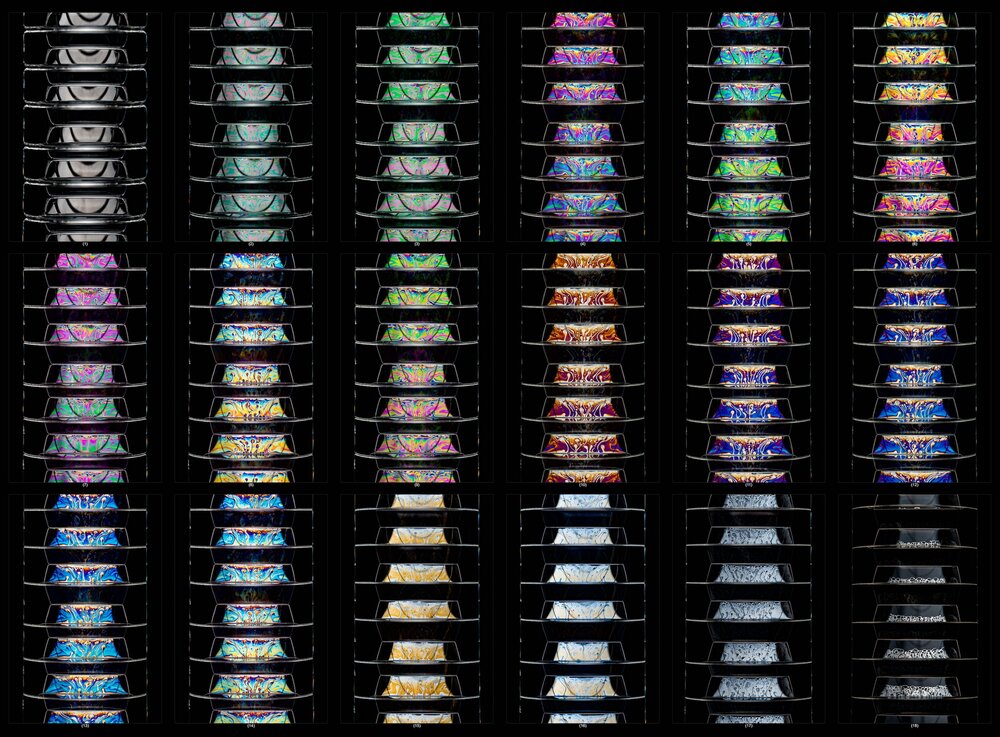
“Life Cycle of Soap Bubble Iridescence” by Kym Cox (UK). Winner, Manmade World.
“This series of time-lapse photographs shows columns of equally-sized soap bubbles in a glass, cylindrical tube. Each photograph – there are 16 in total here – illustrates light interference colours and patterns responding to directional light.
Swirling patterns of colour are created because bubbles are made of a liquid that continually flows, swirls and drains quickly and in all directions. Light waves reflect and refract through the bubble walls. Variations in thickness cause variations in colour and intensity. The speed at which colours and patterns change is phenomenal. The light interference cycle only takes a few seconds to complete.
This was photographed in my studio/lab in May 2016 as part of an Art+Science collaboration with Prof. Stefan Hutzler, Leader of the Foams + Complex Systems Group, School of Physics, Trinity College Dublin.”
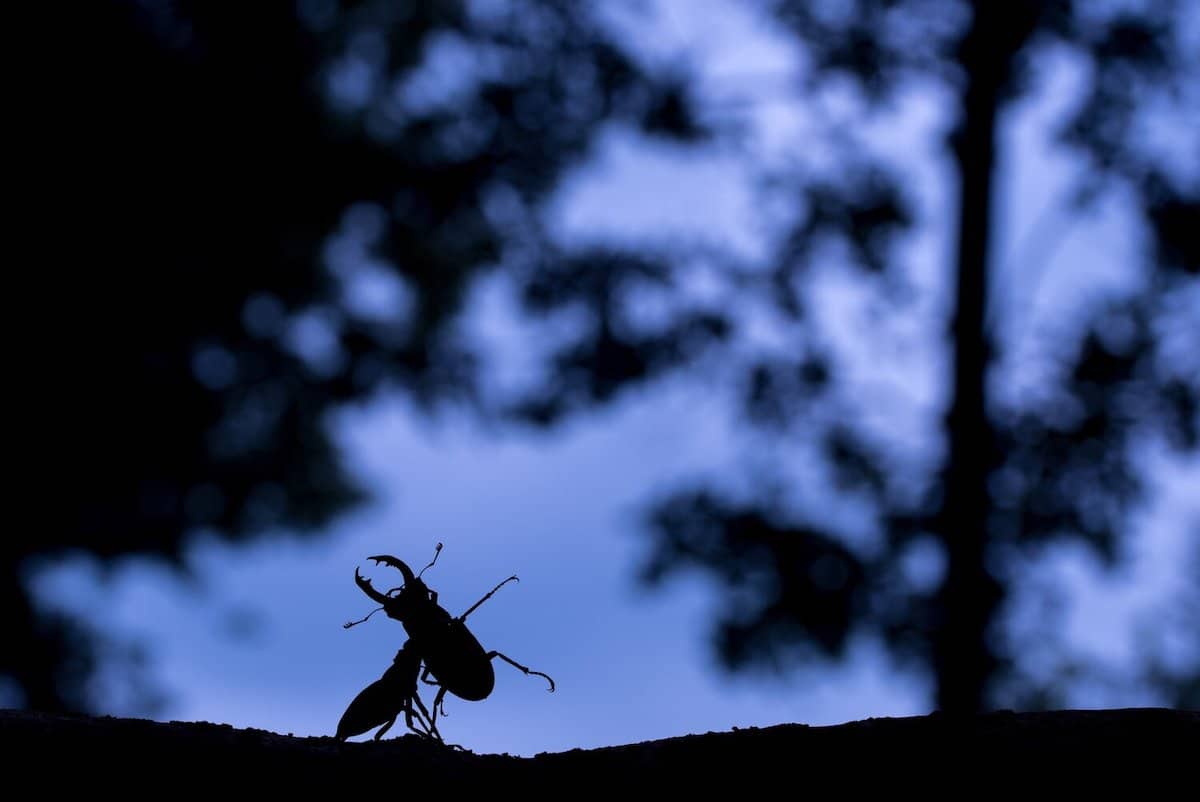
“Stag Beetle” by Edwin Giesbers (Netherlands). Finalist, Insects.
“Only a few places in the Netherlands and Belgium are home to a very special insect: the stag beetle (Lucanus cervus). It is one of the largest beetle species in Europe and has a somewhat prehistoric appearance. The males can grow to over nine inches and are real giants in the insect world. The beetle gets its name from the enormous outgrown jaws that are somewhat reminiscent of the antlers of a deer. Only the males are equipped with this.
Once a male has discovered a female on a tree, he will protect this place from other males. Frantic fighting takes place if another male appears on the scene. The large jaws are used to lift the rival into the air. This is not easy, as the legs are barbed to help the beetles find a firm grip on the bark.
These are the most beautiful moments to photograph and especially in silhouette against the blue evening sky or orange evening sun. You need to act quickly, because if one male manages to lift the other above his head, he will triumphantly throw his rival out of the tree and the titanic battle is over!”
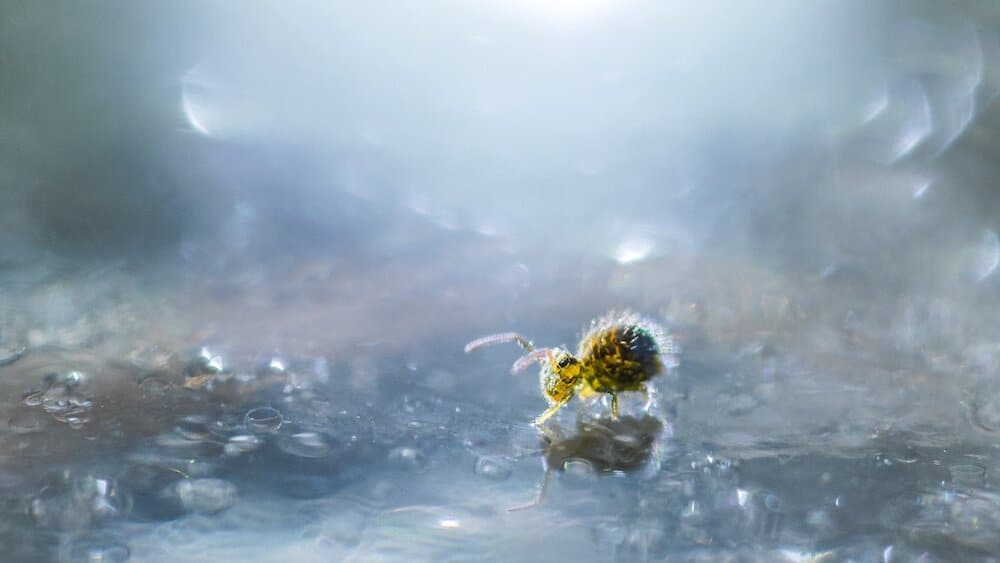
“Little Ball” by Tamas Koncz-Bisztricz. Winner, Young Close Up Photographer of the Year.
“I regularly visit a meadow near my hometown of Csongrád-Bokros, Hungary, observing the site in all seasons. The meadow is grazed by Hungarian grey cattle, which keeps the place in relatively good condition. One frosty winter’s morning I headed out to take some extreme macro shots at the surface of some frozen water that had pooled in the tracks left by a tractor. Crouching down, I spotted some yellow globular springtails (Sminthurus maculatus) which feed in the sunrays reflected from the ice. I used LED torches to illuminate one of them, and came away with a picture that celebrates this tiny creature.”
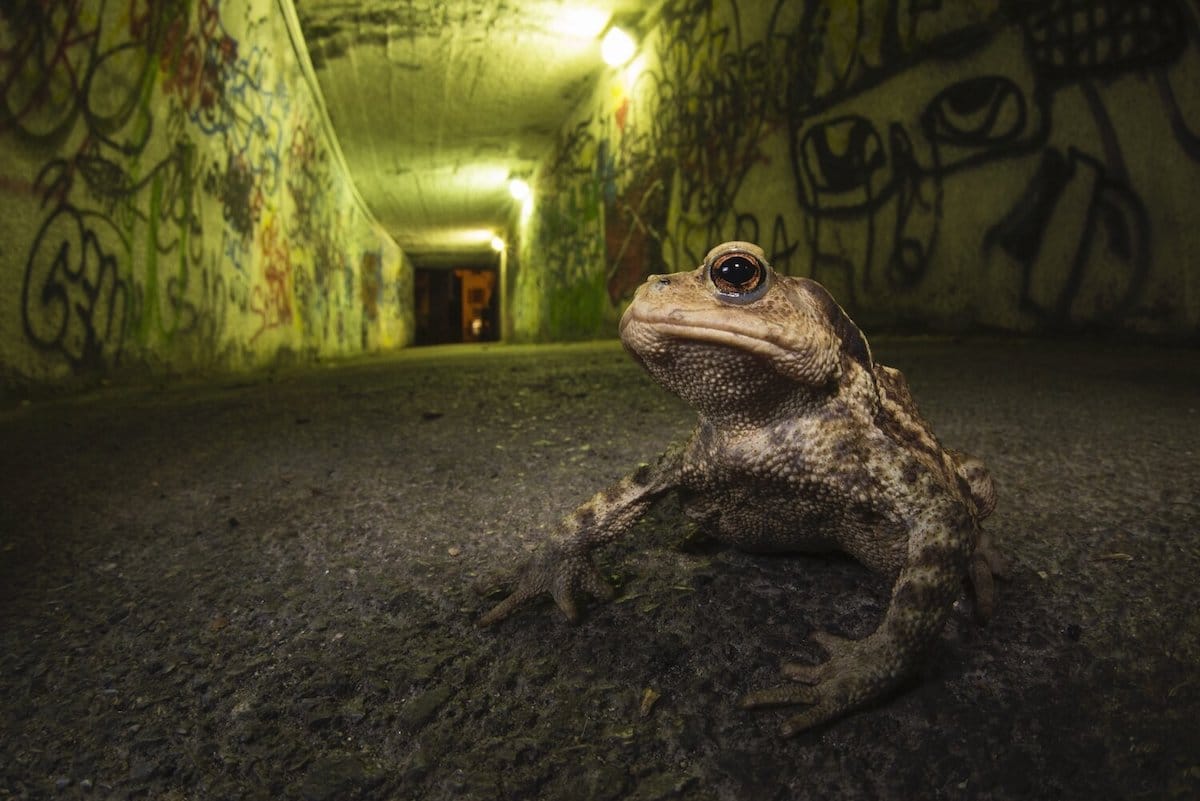
“The Boss” by Marco Maggesi (Italy). Finalist, Insects.
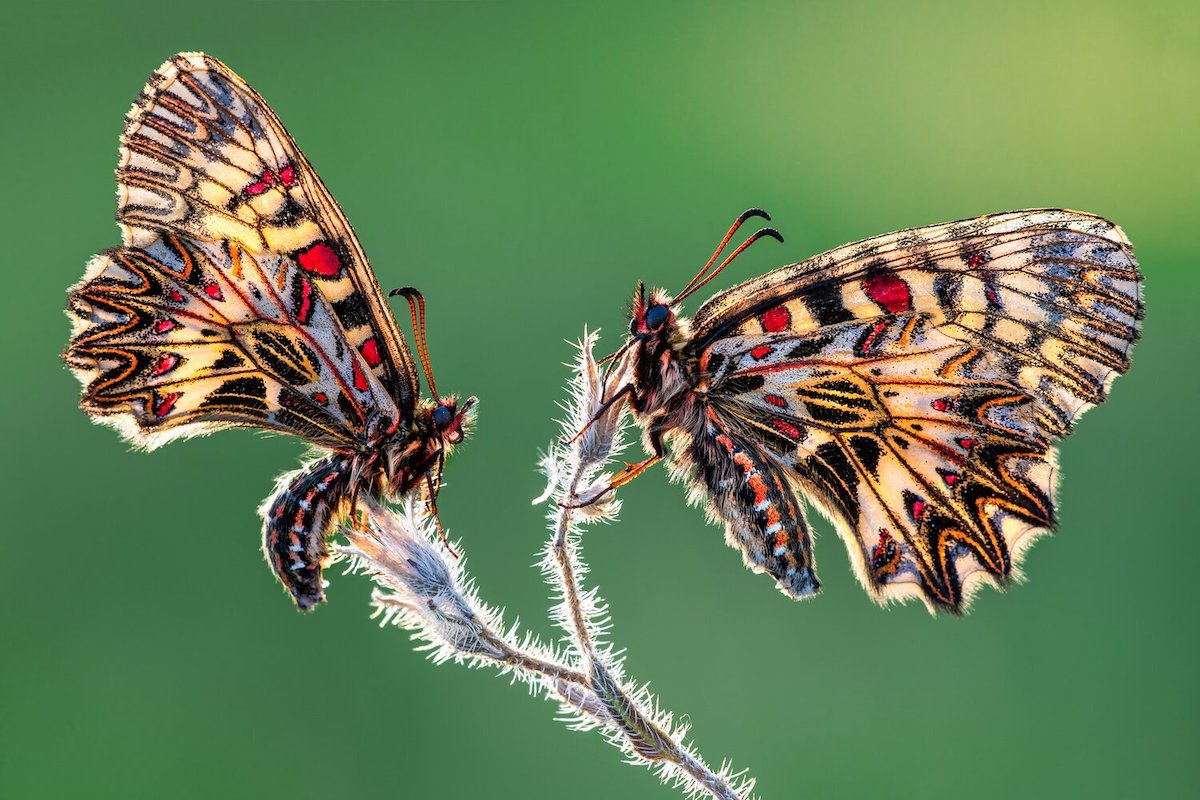
“Balance” by Petar Sabol (Croatia). Finalist, Insects.
“During spring and summer, part of my early morning ritual involves heading out for a spot of macro photography. Searching for amazing insects is pure heaven for me, so I felt great when I came across these two Eastern festoon butterflies. I was so excited it was tempting to take a picture as quickly as possible, but I knew I had to be careful and patient so as not to scare them. The butterflies were still as they hadn’t reached a high enough temperature to fly yet, but it was already quite warm so I knew I didn’t have much time. I carefully set up my camera and tripod, took a few test shots, improved the composition and background as much as I could, and that was it. I was so happy with the end result, and I still am.”
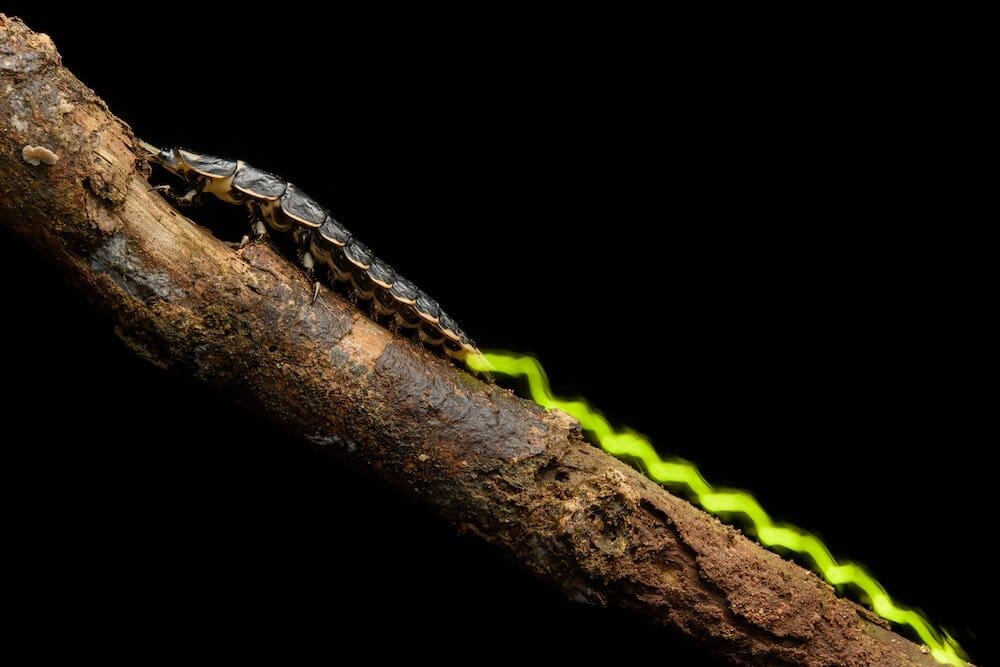
“The Signal” by Chien Lee (United States). Third Place, Insects.
“Bioluminescence is abundant in the Bornean rainforest at night, a feature that becomes evident as soon as you turn off your headlamp, but few organisms emit a light as strong as Lamprigera beetles. Close relatives of fireflies, Lamprigera differ in that the females are wingless and produce a bright and steady greenish light from the tip of their abdomen. During a night walk in the mountains of southern Sarawak, I found this large specimen crawling through low vegetation, presumably on the hunt for snails, their preferred prey. To capture the bright continuous trail of light from its abdomen, I used a long exposure as it made its way along a stick, coupled with a single rear-sync flash.”
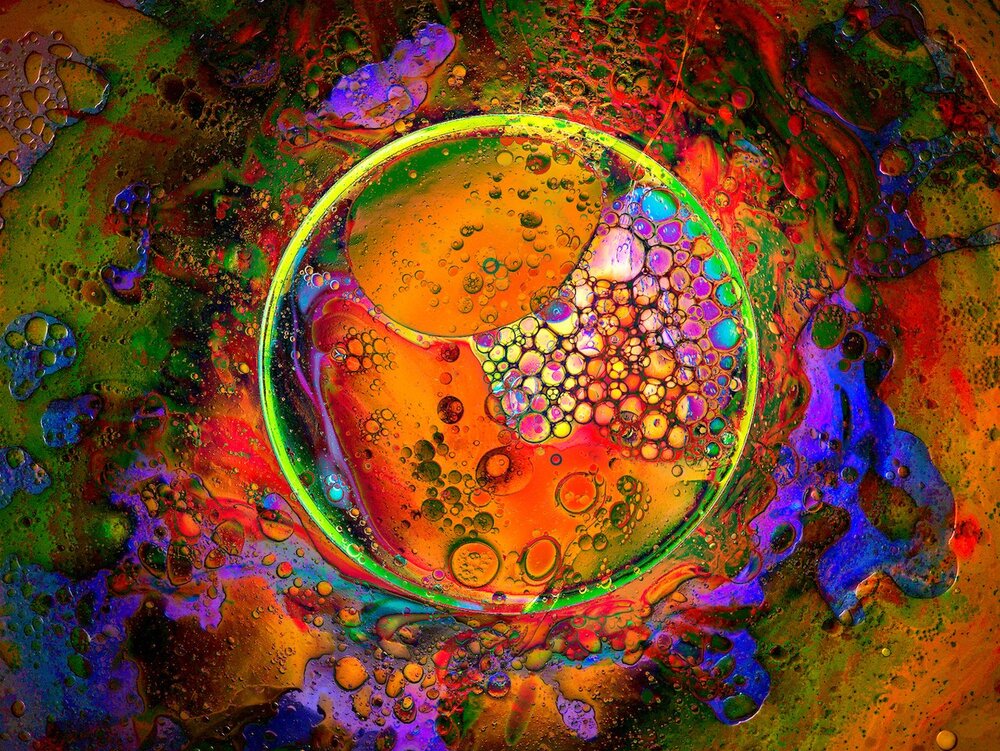
“Herculis” by Benoît Audureau (France). Finalist, Manmade World.













































































